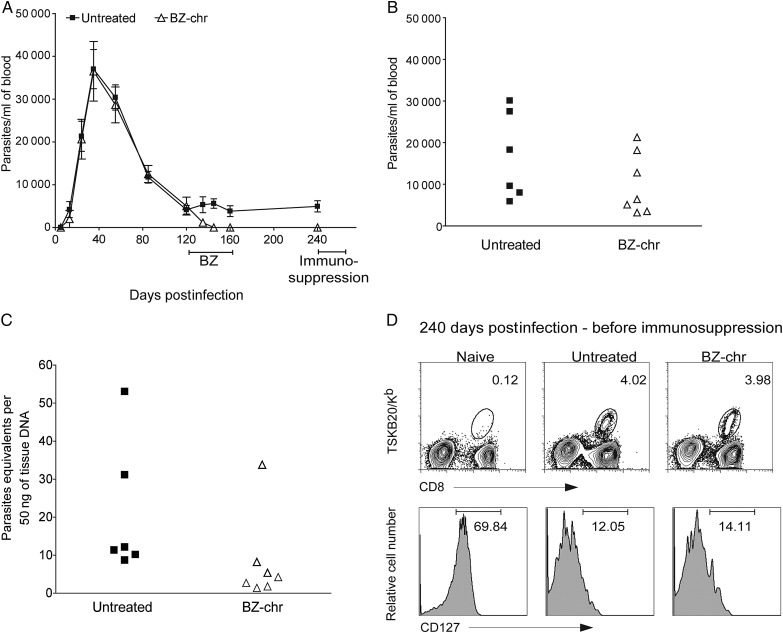Figure 3.
Chronic treatment with benznidazole (BZ) in mice infected with Trypanosoma cruzi Colombiana strain. A, Parasitemia profile in untreated (▪) or BZ-treated (Δ) mice (treatment was carried out during 40 days from 120–160 days postinfection) infected with the BZ-resistant Colombiana strain of T. cruzi. B, Parasitemias in untreated (▪) or treated (Δ) mice at 255 days postinfection, after administration of the immunosuppressant cyclophosphamide (days 240, 243, 246, 248). C, T. cruzi DNA isolated from skeletal muscle tissues of untreated or treated mice and suppressed with cyclophosphamide (15 days after suppression started) determined by quantitative real time polymerase chain reaction. D, Detection of T. cruzi–specific CD8+ T cells in the blood of untreated and treated mice using the TSKB20-tetramer at 240 days postinfection (before cyclophosphamide suppression). Numbers indicate the percentage of tetramer+ cells among the CD8+ T cells population (upper row). Expression of CD127 (bottom row) in blood on the CD8+ T cells (naive) and on the CD8+ TSKB20-tetramer+ T cells from untreated and treated mice at 240 days postinfection. Data are representative of 2 independent experiments each with 5–8 mice per group. Abbreviations: BZ, benznidazole; BZ-chr, chronically infected and treated with benznidazole.

